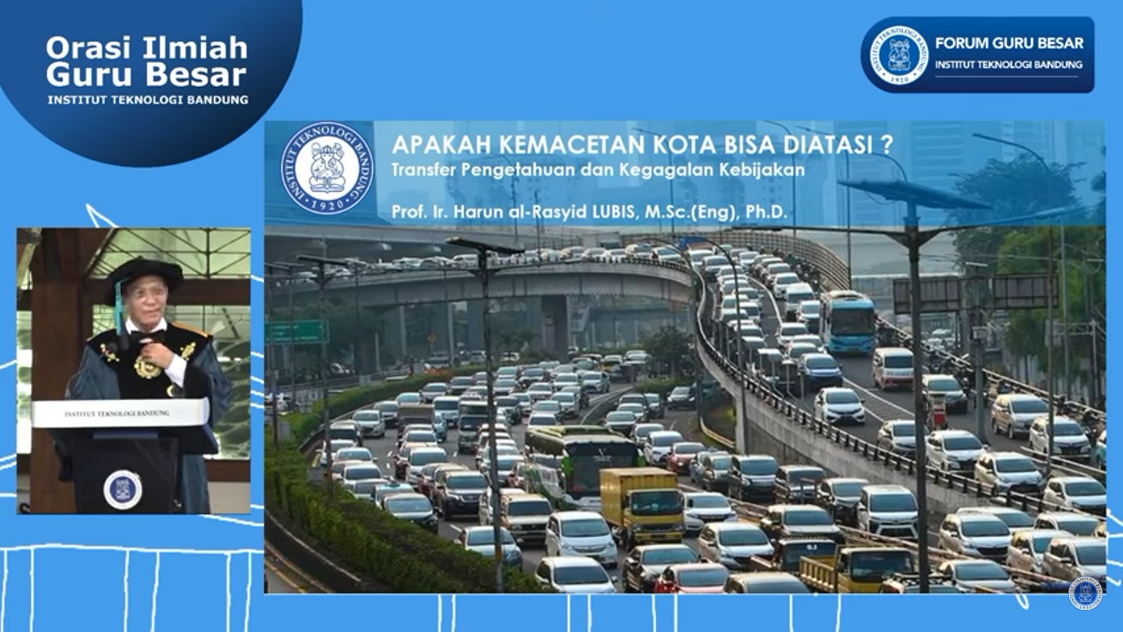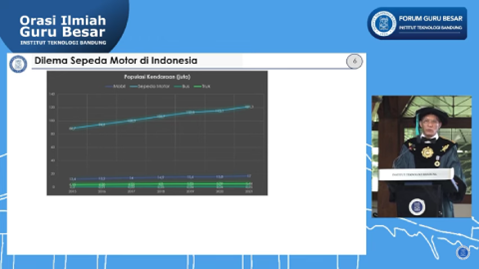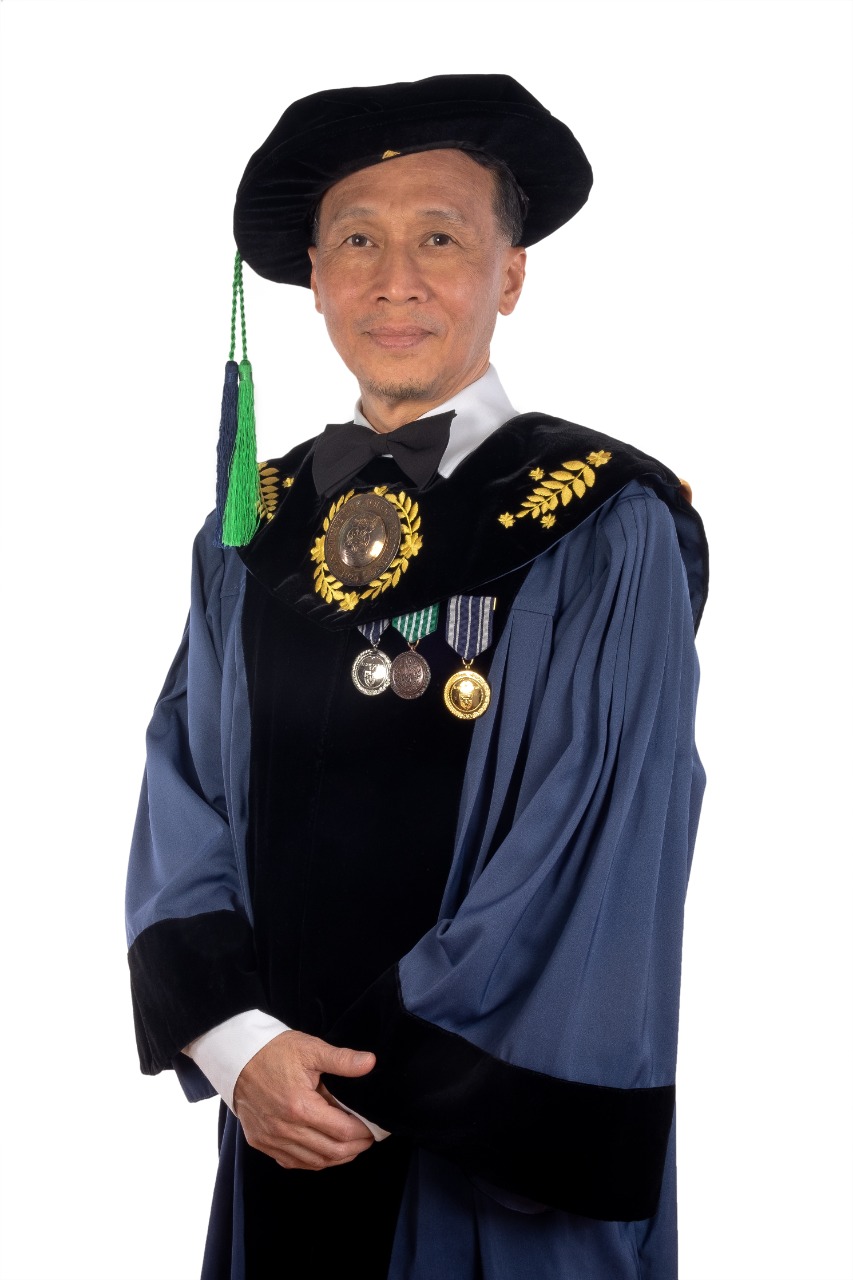Prof. Harun Al Rasyid Lubis Scientific Oration: Traffic Congestion from an Engineering Point of View
By Adi Permana
Editor Adi Permana

BANDUNG, itb.ac.id – Prof. Ir. Harun Al Rasyid Lubis, M.Sc., Ph.D., a professor from the Faculty of Civil and Environmental Engineering ITB, held a scientific oration on Saturday (6/8/2022). In his oration, Prof. Harun talked about his research on traffic congestion from an engineering point of view that was titled "Can City Traffic Congestion be Overcome? Knowledge Transfer and Policy Failures."
Prof. Harun said that currently, more than 50 percent of the world's population reside in urban area. This percentage is steadily increasing and was predicted to reach 70-75 percent by the year 2045 making the number of urban populations reach 6.5 billion people.
The increase in urban populations will cause a direct increase in the demand for goods and services procurement. These factors will directly translate to an increase in mobility. This is the reason why the traffic congestion problem is very difficult to solve.
From an engineering point of view, traffic congestion is divided into two categories, recurrent congestion, and nonrecurrent/incidental congestion. Prof. Harun said that the task of an engineer is to manage the congestion pattern in the city by using various control devices, such as installing traffic detectors below the pavement.
Traffic congestion is a result of a traffic disorder. There are three main traffic rules that need to be fulfilled to ensure smooth traffic, those are Education, Engineering, and Enforcement. Among these three rules, Enforcement is the one that has the least proper implementation. Prof. Harun then quoted Lewis Mumford (1895-1990), "Adding highway lanes to deal with traffic congestion is like loosening your belt to cure obesity".
Simply adding more lanes to try to solve traffic congestion is a very big mistake. This will not solve traffic congestion but rather only make it worse.

Moreover, dependency on a personal vehicle is a major reason for traffic congestion in Indonesia. In European countries personal vehicle ownership is decreasing every year because of the availability of proper public transportation, this is in contrast with the condition in Indonesia where there are more motorized vehicles than people. Indonesia needs an efficient spatial strategy such as building settlements close to industrial areas with integrated public transportation to facilitate better mobility.
Prof. Harun then conveyed five strategic objectives and sustainable transportation policies. First, promoting urban public transportation to reduce the use of a personal vehicles. Second, spatial planning strategy to create a comfortable mobilization environment. Third, urban logistic urgency needs to be prepared carefully. Fourth, composing a strategic plan that is explicitly financially viable and can be measured. Fifth, improving transportation management to be more integrated and transparent.
"The problem of urban transportation and traffic congestion can be solved if the society wants to change its habits and switch to public transportation. However, for them to switch to public transportation we need to ensure that it is comfortable, accessible, and cheap," said Prof. Harun.
There are three resources needed to create a good transportation system, those are fiscal, innovation, and investor. Further research on modern transportation such as autonomous vehicles will be very beneficial to society.
The transportation engineering field can easily encompass modern and sophisticated technologies. However, this strategic planning needs to be related to a financial capability that is explicit and can be measured, so that fiscal limitations can be managed. To operate it, we need sustainable transportation pillars such as clear authority, an integrated masterplan, and sufficient resources from both the government and private entities.
Reporter: Pravito Septadenova Dwi Ananta (Geological Engineering, 2019)
Translator: Favian Aldilla R (Civil Engineering, 2019)

.jpg)
.jpg)
.jpg)
.jpg)
.jpg)


